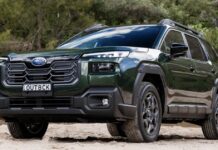BMW is evaluating the addition of petrol range-extender (EREV) technology to select electric vehicle models, primarily larger vehicles like the i7 and iX5. This move signals a potential shift in strategy, acknowledging real-world limitations in EV infrastructure and consumer adoption rates. The company previously used this tech in the i3, but modern EREVs are designed to provide continuous long-range capabilities, unlike the original i3’s limited supplementary range.
Why Now? Addressing Range Anxiety and Market Trends
The rise of EREVs is being driven by several factors. First, consumer demand in key markets like China has proven strong for EREVs, offering a bridge between full EVs and traditional combustion vehicles. Second, automakers are responding to slower-than-expected EV adoption in regions like the United States, where infrastructure limitations and range anxiety remain significant barriers. Volkswagen’s Scout brand and Ram’s recent shift towards range-extenders exemplify this trend.
The move reflects a pragmatic approach, especially in markets where charging access is inconsistent or slow. Unlike the i3 REV, which used a small scooter engine primarily to reach a charging station, modern EREVs utilize larger engines for extended driving without needing frequent stops.
BMW’s Unique Position and Future Plans
BMW’s approach differs from some competitors who aggressively pursued all-electric lineups. Instead, the company leveraged its existing CLAR architecture to support multiple drivetrain options, including EV, petrol, diesel, mild hybrid, and plug-in hybrid. This flexibility allows BMW to adapt to changing market conditions without scrapping entire platforms.
The upcoming Neue Klasse platform, debuting in the iX3 and future i3 sedan, will further expand BMW’s EV offerings. However, the consideration of EREVs suggests that BMW isn’t betting solely on pure electric solutions.
Conclusion
BMW’s potential embrace of petrol range-extenders is a calculated move to address practical concerns about EV range and infrastructure. It acknowledges the reality that full EV adoption isn’t happening as fast as some predicted, and provides an option for drivers who want the benefits of electric driving without the limitations of current charging networks. This signals a willingness to adapt and remain competitive in a rapidly evolving automotive landscape.




































